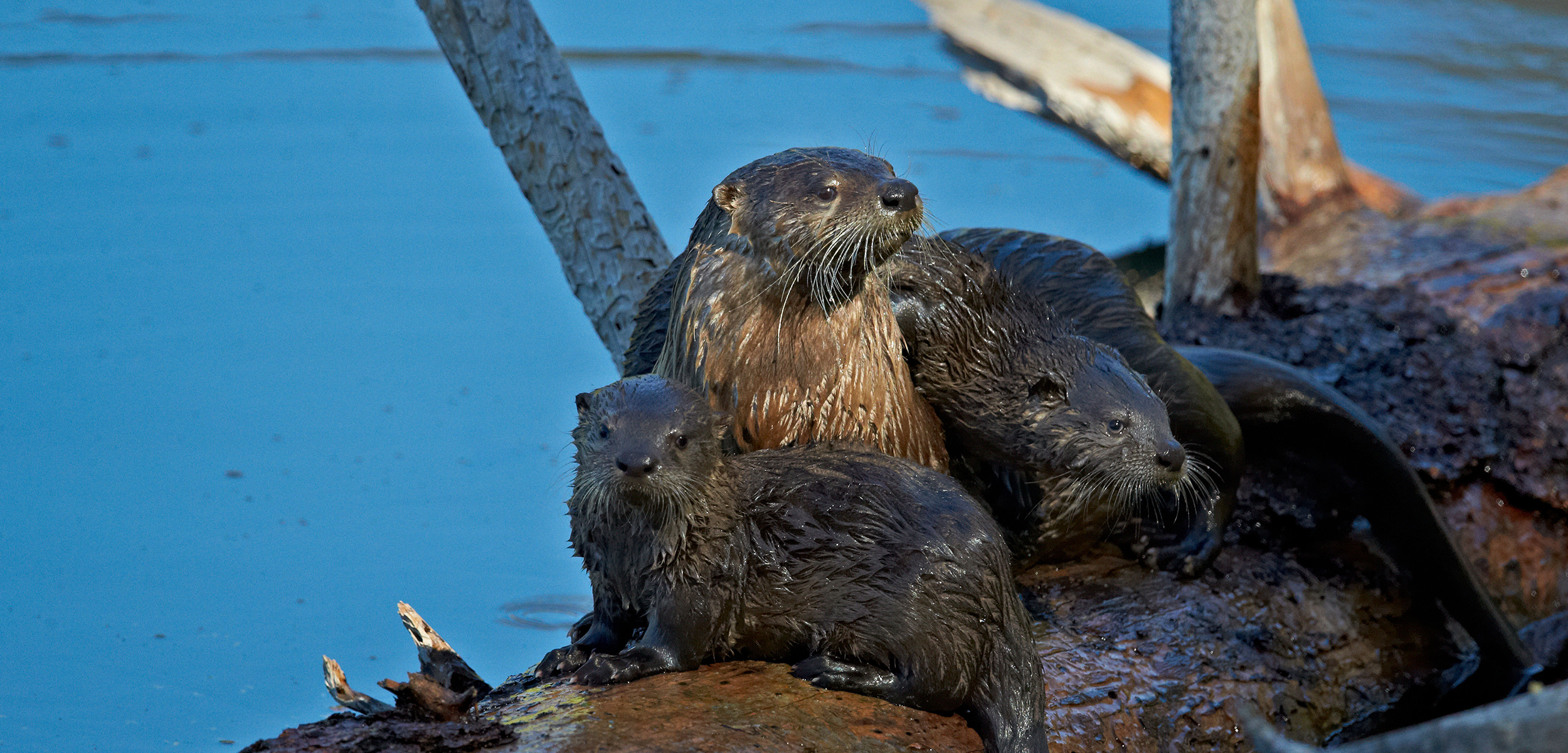Don’t Read Too Much into River Otters’ Return
Everyone knows about the canary in the coal mine. Well, river otters ain’t that.
Article body copy
Standing at the foot of a rocky sandstone cliff, biologist Michelle Wainstein inspected her essentials: latex gloves, two long cotton swabs, glass vials, and tubes filled with buffer solution. She placed them in a blue dry bag, rolled it up, and clipped it to a rope wrapped around her waist. It was late afternoon, and she was slick with dirt and sweat from navigating the dense terrain. Her destination lay across the frigid river: two small logs of otter fecal matter resting on a mossy boulder. In she plunged.
The river, the Green-Duwamish in Washington State, trickles out of the Cascade Range and empties 150 kilometers downstream into Puget Sound. The last eight kilometers of the run—known as the lower Duwamish—is so polluted the US Environmental Protection Agency designated it a Superfund site in 2001. For a century, Seattle’s aviation and manufacturing industries routinely dumped waste chemicals like polychlorinated biphenyls (PCBs) and polycyclic aromatic hydrocarbons (PAHs) into the water.
“A lot of the river is still really polluted,” says Jamie Hearn, the Superfund program manager at Duwamish River Community Coalition. “The mud is thick and black, and you can smell it.”
Despite the pollution, river otters are everywhere along the waterway, even in the most contaminated areas near the river’s mouth. “I would be walking the docks looking for scat,” remembers Wainstein, “and a couple of times we were lucky enough to see moms with their pups.”
For several weeks in the summer of 2016 and 2017, Wainstein surveyed otter poop she collected from a dozen sites along the river. Comparing contaminant concentrations in the otters’ poop between the river’s industrial and rural zones, Wainstein uncovered the lingering legacy of the region’s toxic past. The poop from otters in the lower Duwamish contained nearly 26 times more PCBs and 10 times more PAHs than poop from their cousins in cleaner water upstream. PCBs disrupt hormonal and neurological processes and affect reproduction in mammals. Both PCBs and PAHs are human carcinogens.
The discovery that otters along the lower Duwamish are living with such high levels of contamination upends a common narrative: that river otters’ return to a once-degraded landscape is a sign that nature is healing.
In Singapore, where smooth-coated otters have reappeared in canals and reservoirs, they have been embraced as new national mascots. “It plays into that rhetoric that government agencies want to project,” says environmental historian Ruizhi Choo, “that we’ve done such a good job that nature is coming back. That image of a city in nature is the new marketing branding.”
In Europe, the once-common Eurasian otter similarly began reappearing in the late 20th century following successful river cleanup campaigns. Conservationist Joe Gaydos at the SeaDoc Society thinks that this phenomenon has helped form the mental link between otters and ecosystem health.
“The number of animals is our first indicator,” Gaydos says. But few seem to ask the next question: are those animals healthy?
As Wainstein’s study suggests, perhaps not. The otters she analyzed in the lower Duwamish have some of the highest concentrations of PCBs and PAHs ever recorded in wild river otters. Previous research has found a correlation between PCB exposure and health risks in wild river otters, including increased bone pathologies, reproductive and immunological disorders, organ abnormalities, and hormonal changes.
Even so, the contamination is not manifesting in physically obvious ways. “They’re not washing up on shore with tumors all over their bodies,” Wainstein says, and neither is their population dwindling. “They’re not setting off this direct alarm with a big change in their ability to survive.”
The otters’ ability to bear such a heavy contaminant burden suggests that a population resurgence alone may not reflect the quality of an environment. They just become as toxic as the environments they inhabit.
However, their localized bathroom habits, mixed diet of fish, crustaceans, and mammals, and persistence in the face of pollution make them useful indicators of environmental contamination.
River otters have played this role before. Following the 1989 Exxon Valdez oil spill, river otters lingered in oil-drenched waterways, allowing scientists like Larry Duffy at the University of Alaska Fairbanks to track the effectiveness of the oil cleanup. In 2014, scientists in Illinois discovered dieldrin in otter organ tissue even though the insecticide had already largely been banned for 30 years. In these cases, the collection of long-term pollution data was made possible by the creatures’ resilience in contaminated waterways. Wainstein wants to similarly use the Green-Duwamish River otters as biomonitors of the Superfund cleanup over the next decade.
Watching workers dismantle a portion of the river’s levied banks to make channels for salmon, Wainstein thinks about the seabirds, shorebirds, and small mammals, like beaver and mink, that were driven out by industrial contamination. She wonders if one day the rumbling machinery dredging up clawfuls of sediment from the riverbed will be taken over by the piercing cries of marbled murrelets, the croaks of tufted puffins, and the bubbling twittering of western snowy plovers.
“How long will it take? And will it actually work?” she says of the cleanup effort. The otters might hold the answer.

